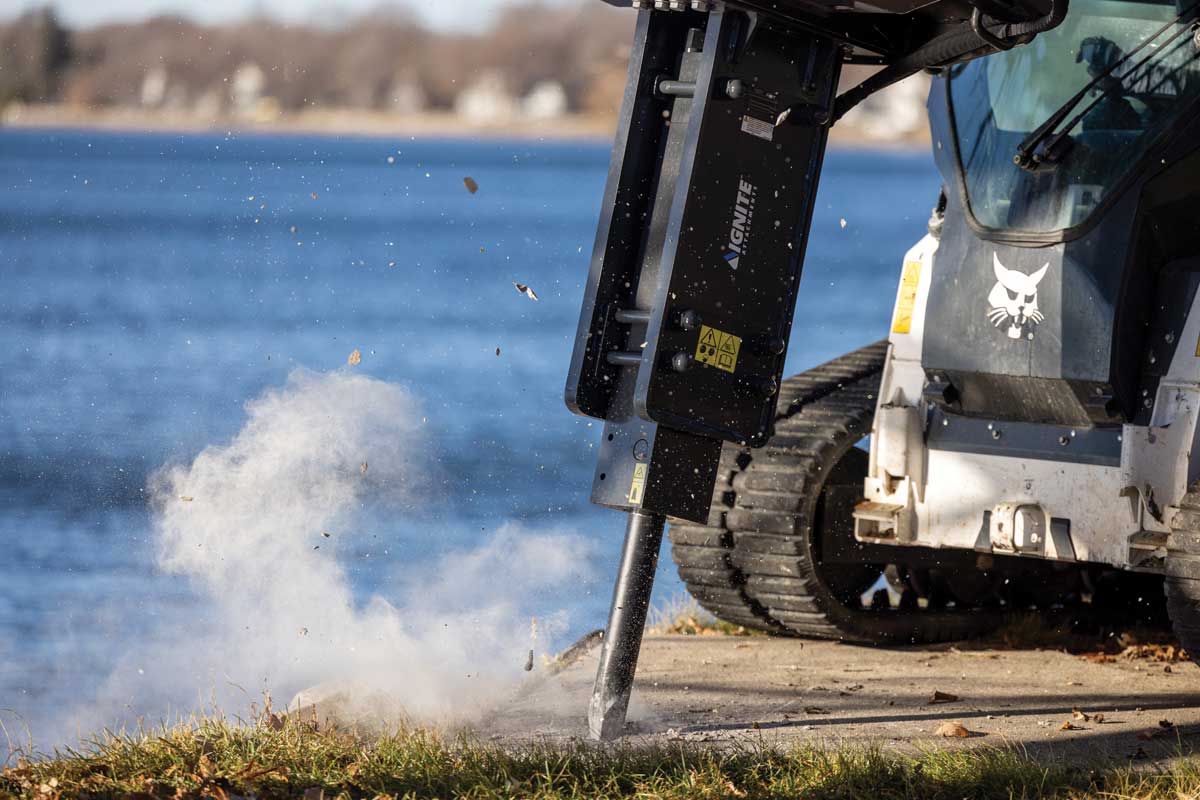Blades for Skid Steers, From Dozer to Snow Pusher
With tight budgets and slim operating margins, contractors are relying more heavily than ever on their compact loaders — skid steers and compact track loaders, to name the two most common machines — and more specifically, on the attachments that make them so versatile. Blade attachments give contractors the ability to use a compact loader to move and push large amounts of material efficiently. Because of their popularity among general construction and landscape contractors, there are a variety of different blade types available for compact loaders, including V, snow, box, grader and dozer. Although each is designed to do a specific task on a jobsite, the main function of any blade attachment is to push and level material.
A V-blade attachment is one of the most versatile blades available. This attachment uses the variable angle blade as a V-plow, scoop, straight snow blade or an angled snow blade. The two independently variable blade halves let loader operators quickly adjust the attachment from inside the cab to angle left, right or V-plow to match the blade to the needs of the job.
Snow blades, which can be as narrow as 3 ft or as wide as 10 ft depending upon the size of the loader, can push a tremendous amount of snow at high speeds. For contractors using a snow blade on a compact loader, adjustable skid shoes allow the operator to vary the height of the plow edge for plowing on various surfaces. Compression trip springs let the operator disengage the plow when encountering solid or heavy obstacles, such as rocks. Box blades are used by general contractors for leveling, as well as by landscapers and flat workers for finish grading and spreading aggregate. These blades have removable side walls that can harness the material to eliminate windrows of material.
Angled grader blades are popular for doing leveling for concrete or asphalt or just general site prep work on the jobsite. These blades can either be angled manually or remotely using the units’ auxiliary circuit. Compared to straight blades, these blades offer a wider contact area to the ground and exceptional grading capabilities, as well as the ability to adjust cut depth on the go.
Because they excel at excavation, dozing and grading tasks, dozer blades can be used in everything from site prep to finish grading. These heavy-duty blades allow the operator to use their compact loader like a small finish dozer. But unlike a small finish dozer, once the operator is done with the dozing application, the loader’s attachment can be changed out to a bucket or other option, and the operator can take on another task with the same machine — something a dedicated finish dozer simply cannot do — improving a contractor’s equipment utilization and return on investment.
All of these different blades (with the exception of the snow blades) can be wired up to receive laser coordinates, giving the attachments the ability to read X and Y axes to get the final grade within a tenth of an inch. The ability to do this is critical when using the compact loader and blade attachment to do spec accurate jobs — the operator simply has to drive the loader within eyeshot of the laser.
With different sizes and styles available for each of these blade attachments, contractors should choose the style of attachment based on the application and the size of the attachment in relation to their loader. Contractors should consult with their equipment distributor to best match the right size of attachment to a loader’s horsepower and hydraulic capabilities. Distributors will typically also offer valuable training on how to operate the attachment — in forward and reverse, as well as how to use the float function.
Using compact loaders with different blade attachments can help totally revolutionize a small business, enabling contractors to bid on larger projects and to work in all weather and ground conditions. By carefully selecting the right blade attachment for the job, contractors can increase their profits and the attachments will pay for themselves.
Jamie Wright is a product manager with Terex Construction Americas, based in Grand Rapids, Minn.





Comments are closed here.